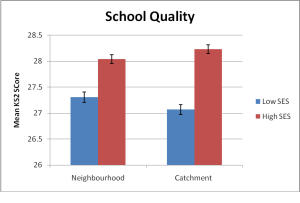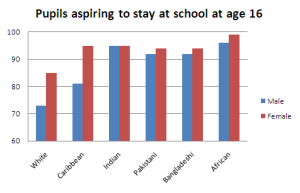Rebecca Allen and Simon Burgess
As children start their lessons in the 24 Free Schools opening this week, a new experiment begins in English education. The founders and staff will have been working hard for this day over many months and no doubt all will wish the pupils and staff well. There has been a lot of political passion on both sides of the debate, but what is the significance of the Free Schools experiment likely to be?
It is not an experiment because of the “free” part – Free schools will enjoy essentially the same freedoms as Academies do. It is an experiment because now anyone can propose to set up a school, and attract the same per-pupil funding from the state as other local schools. Anyone can propose … but the vetting process to check whether the applicants are “fit and proper” to run a school is (rightly, in our view) so stringent that around 90% of the original applications were turned down.
Will the experiment work? Work for whom? The focus cannot just be on the 5000 or so pupils starting now, less than a twentieth of 1% of their cohort. If so, this would be an incredibly expensive and high profile way to change the education chances of such a small number.
The focus has to be on the systemic impacts of the reform. What impact will the new option of opening a Free School have on the local schools?
The main idea, the big hope for the policy, is that this will raise the “competitive threat” to under-performing local schools. Economists talk about market entry: the theory that the threat of new suppliers entering a market works to keep the incumbents efficient and responsive. Any un-served niches or excessive costs would draw in new companies to offer a better deal. Arguably, the prime function of the Free Schools experiment is to make the schools market “contestable”. This might sharpen the efforts of schools to raise their game to avoid losing their pupils to the new schools.
This might work. It is conceivable that really poorly performing schools may not wish to see their school supplanted by a new entrant, and push to raise attainment standards. But the UK evidence on the effects of competitive pressure on school effectiveness is not encouraging. Put at its best, there is only very weak evidence for small effects of competition. This is not true in every country, nor in every service in the UK, and there appear to be important market structural reasons why competition does not work to raise standards in schools.
This is not at all to say that all competitive mechanisms are pointless. Clearly any school system needs a strong policy for dealing with failing schools, something to act as a discipline on the performance of Headteachers and school governors. Free schools offer this in principle: in extremis, parents very dis-satisfied with their state school can opt out and set up their own school. But there are two reasons why Free Schools are unlikely to be the best answer to this. First, there are very significant set-up costs, both in time and energy from the founders, but also in the straightforward sense of acquiring premises. While currently these are being funded (very generously) by the government, this simply cannot continue if the policy matures and spreads. But secondly, it seems inconceivable that any local area with one Free School would be offered the resources for any others. So as discipline device, this is a one-shot game, not an on-going continued pressure on low performing schools, which is what is needed.
Despite the first rush of enthusiasm, it seems unlikely that Free Schools will act as a major stimulus to systemic higher performance. Perhaps the main problem was not the barriers to entry preventing many highly competent and motivated school-starters from setting up. In which case, we will need other policies to address poorly performing schools in disadvantaged neighbourhoods.
There are other important potential systemic effects, interactions between Free Schools and their neighbouring schools.
The first is school admissions. Free Schools will take part in coordinated admissions and, although, like Academies, being their own admissions authority, they will have to adhere to the Admissions Code. The big issue is whether the founders have any special rights to get their own children into ‘their’ school. It may be that this is one aim of the clause in the new draft Admissions Code allowing schools to give admissions priority to the children of “staff”. This is a difficult issue: it is quite understandable that those putting in time and effort to set up a new school want to get their own children in. But there are dangers: if this becomes the norm, we have a new route for particular individuals to get their child into a good school, by founding or acquiring a stake in, a Free School. In any case, the admissions criteria and the highly related question of how to pass on a “stake” in a Free School need to be clarified.
Another important spill-over effect concerns funding. The on-going current expenditure of Free Schools is funded on the same basis as Academies, so is not much different from maintained schools (just differentiated by not having to pay the local authority for central services). But the capital funding is another matter. Funding the acquisition and refurbishment of premises, estimated by the DfE at £120m, has been a substantial drain on a much-reduced schools capital budget. The funding for Free Schools’ buildings is a direct diversion of funds from other capital funding projects, many in far more needy schools and disadvantaged areas than the Free Schools.
But finally what Free Schools are likely to offer is scope for pedagogical innovation. This will not always be the case – some of the groups setting up schools may have rather conservative ideas on what constitutes a good education. But others will likely be set up by innovators with radical ideas on how to teach.
So perhaps that’s what Free Schools will end up being for: not really working as a spur to higher standards but acting as incubators for radical new teaching ideas. Very valuable indeed, but perhaps not what everyone was expecting.





